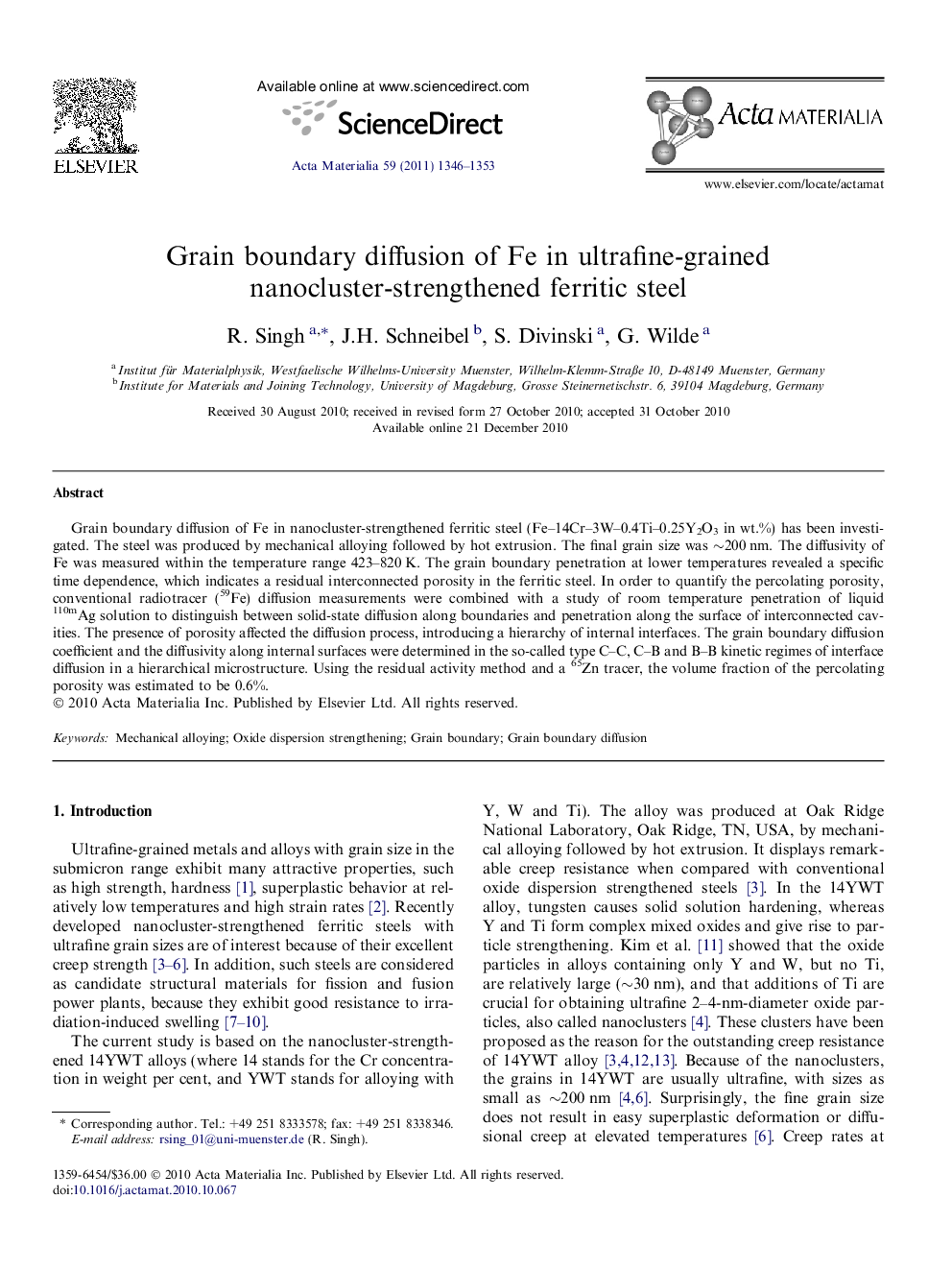| Article ID | Journal | Published Year | Pages | File Type |
|---|---|---|---|---|
| 10620590 | Acta Materialia | 2011 | 8 Pages |
Abstract
Grain boundary diffusion of Fe in nanocluster-strengthened ferritic steel (Fe-14Cr-3W-0.4Ti-0.25Y2O3 in wt.%) has been investigated. The steel was produced by mechanical alloying followed by hot extrusion. The final grain size was â¼200Â nm. The diffusivity of Fe was measured within the temperature range 423-820Â K. The grain boundary penetration at lower temperatures revealed a specific time dependence, which indicates a residual interconnected porosity in the ferritic steel. In order to quantify the percolating porosity, conventional radiotracer (59Fe) diffusion measurements were combined with a study of room temperature penetration of liquid 110mAg solution to distinguish between solid-state diffusion along boundaries and penetration along the surface of interconnected cavities. The presence of porosity affected the diffusion process, introducing a hierarchy of internal interfaces. The grain boundary diffusion coefficient and the diffusivity along internal surfaces were determined in the so-called type C-C, C-B and B-B kinetic regimes of interface diffusion in a hierarchical microstructure. Using the residual activity method and a 65Zn tracer, the volume fraction of the percolating porosity was estimated to be 0.6%.
Related Topics
Physical Sciences and Engineering
Materials Science
Ceramics and Composites
Authors
R. Singh, J.H. Schneibel, S. Divinski, G. Wilde,
